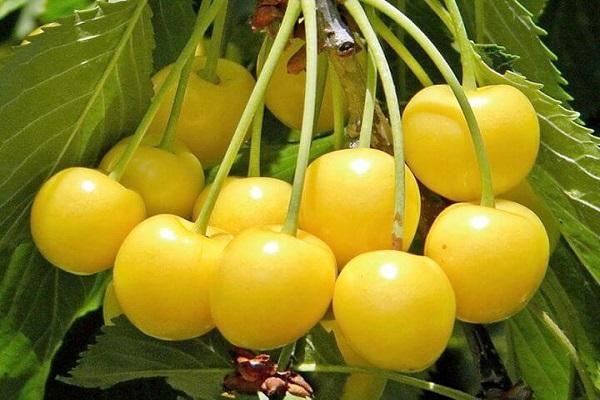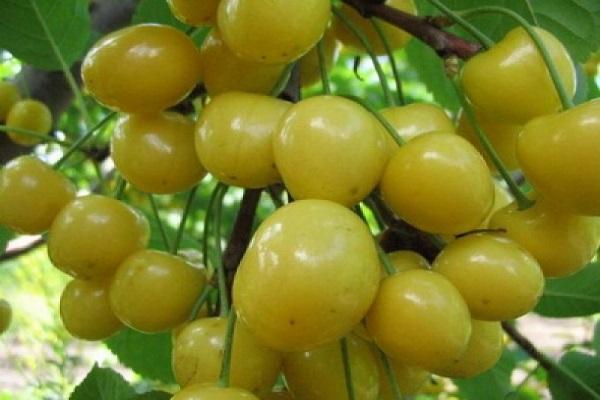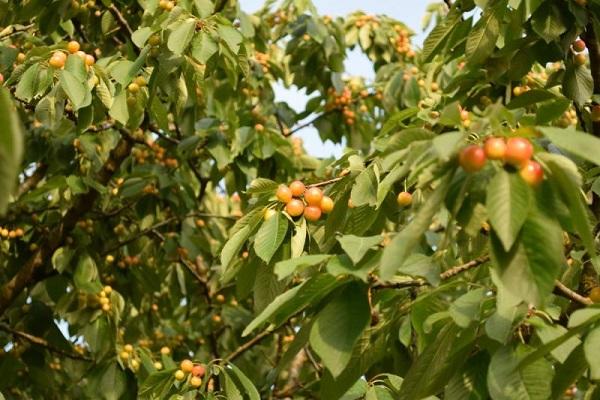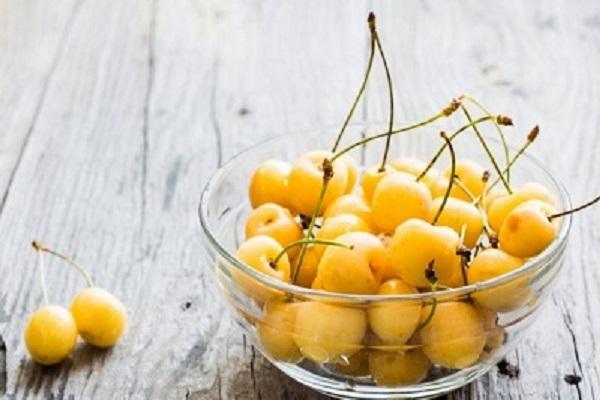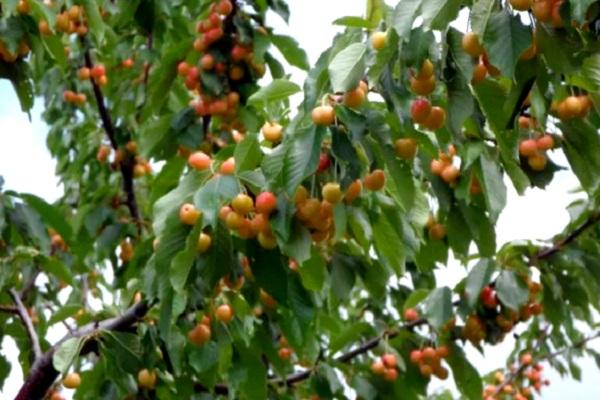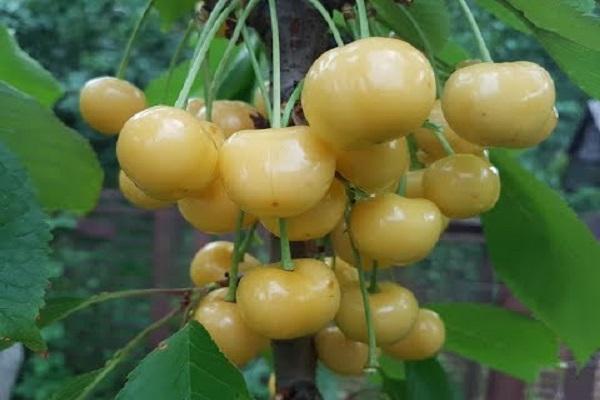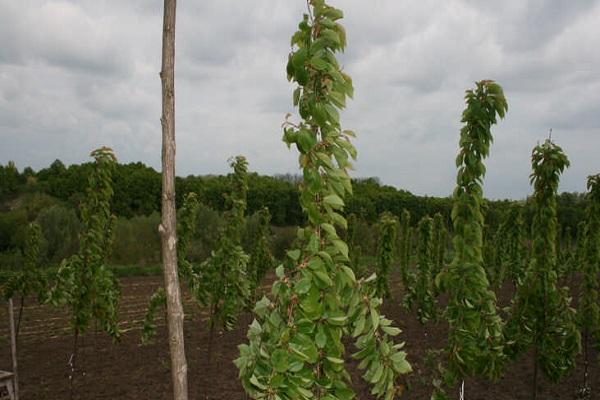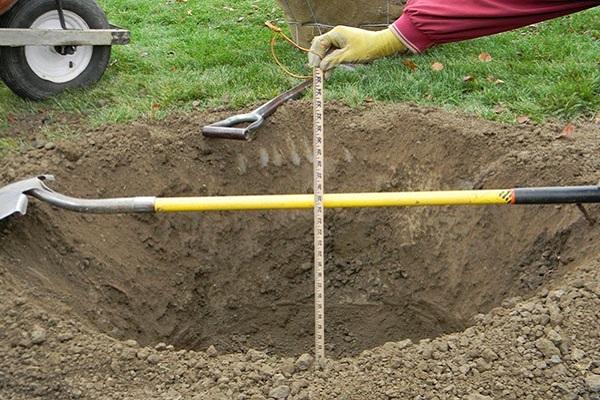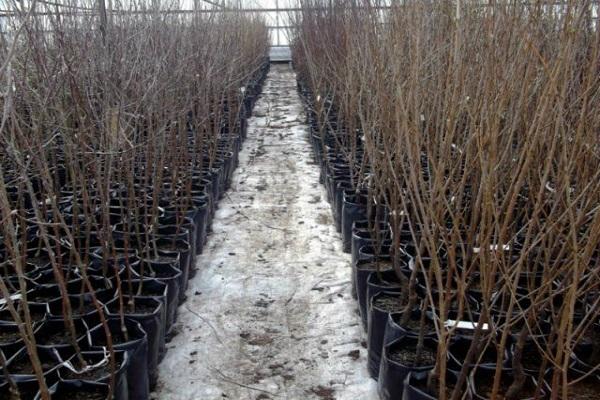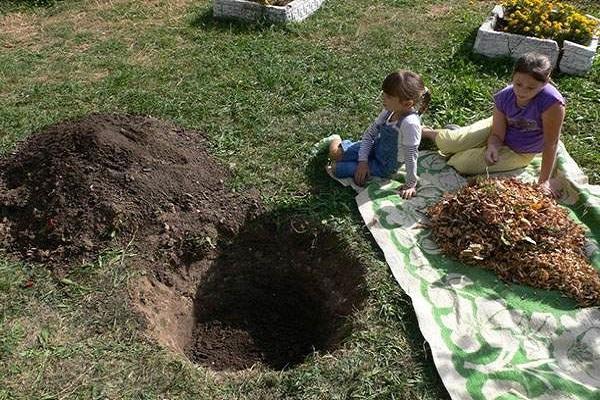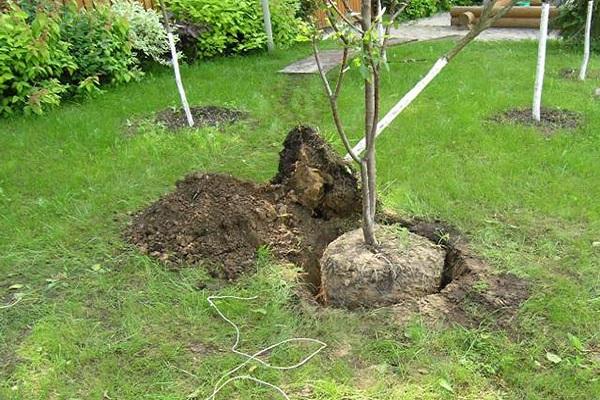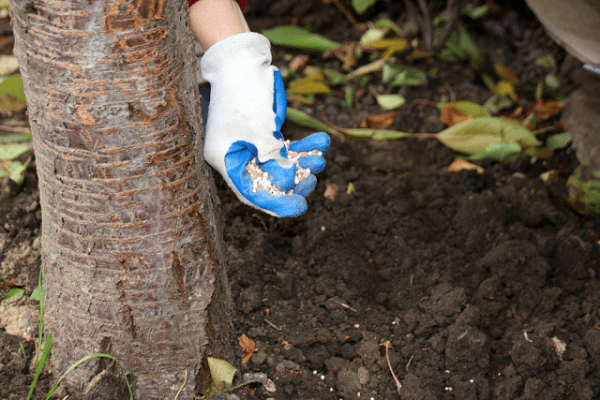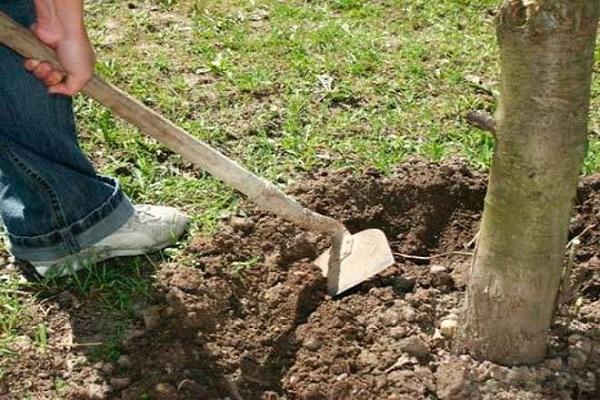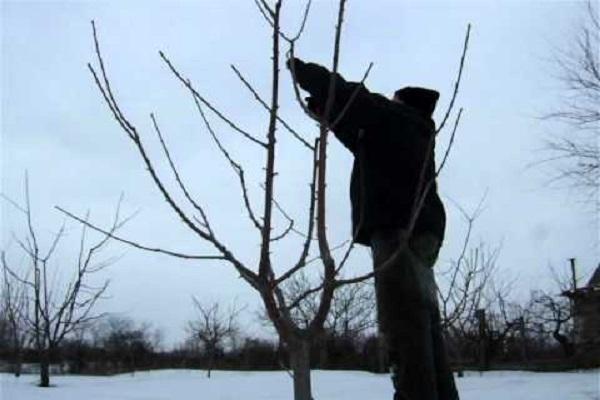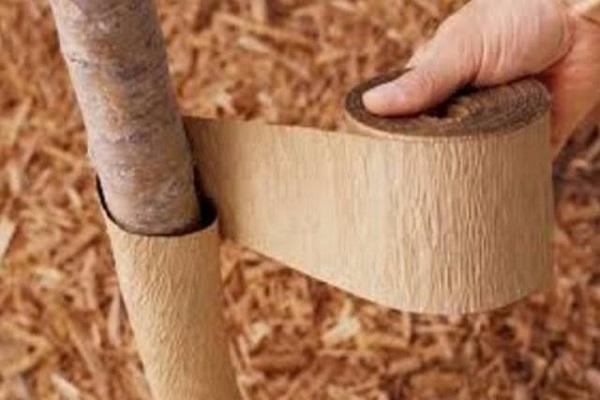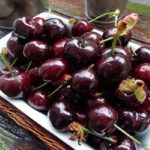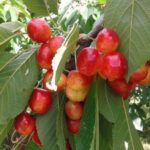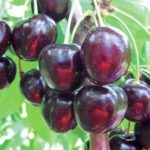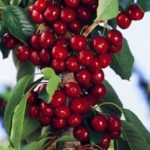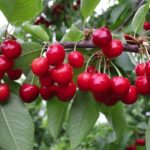Yellow cherries are a favorite delicacy and an already established fruit crop. But the yellow cherry is especially admirable. This variety is young, early, early ripening and productive. And if he has shortcomings, then they are literally a continuation of his advantages.
- History of origin and region of growth
- Description of the cherry variety Homestead yellow
- Tree height and crown branching
- Pollinators, flowering and yield
- Transportability and use of berries
- Characteristics of culture
- Drought resistance
- Frost resistance
- Susceptibility to insects and diseases
- Planting cherries on the site
- Recommended timing and planting scheme
- Recommendations for choosing a seedling
- Preparation of the planting pit and planting technology
- How to care for a tree
- Feeding and watering
- Weeding and loosening the tree trunk circle
- Form trim
- Preventative treatment
- Preparing cherries for winter
- Reviews of cherry Homestead yellow
History of origin and region of growth
Experts all over the world are actively engaged in the selection of fruit plants. The work of domestic geneticists and breeders has been noted for remarkable success. The Priusadnaya yellow cherry variety was created in Russia by crossing the Leningradskaya red and Zolotaya Loshitskaya varieties with subsequent neural irradiation. And together with other new fruit stone fruits, it confidently took an honorable place in the household farms of the Central Black Earth Region.
In recent years, our climate has been softening. In the reviews there are comments about a successful trial of growing cherries in more northern territories. But there they give the plant a slate-like shape, gradually tilting the seedling closer to the ground from year to year, while at the same time, by pruning, giving the crown the necessary shape. An extremely challenging and interesting experience.
Description of the cherry variety Homestead yellow
Tree height and crown branching
The yellow cherry grows very quickly. If the gardener does not control the growth in a timely manner, by the time of fruiting the height of the tree can reach 4-5 m. This will create many problems when harvesting and protecting it from birds. Although, according to some reviews, yellow-fruited cherries do not seem to tempt them. That would be an extra big plus.
The massive trunk and tiered arrangement of cherry shoots represent a spreading, spherical, well-leafed crown with a radius of up to 4 m. But it cannot be called very thick, so formative pruning and harvesting are not particularly difficult.
Pollinators, flowering and yield
A huge advantage of Homestead Yellow is its self-pollinating ability. It was noticed that the proximity to other pollinators could increase the yield. But how can we increase it given its productivity? She herself, in turn, is a good pollinator and a valuable honey plant.
Cherry blossoms early: in early May. Elegant inflorescence bouquets of 3-5 wonderful white flowers are resistant to frosty May mornings. Homestead yellow cherries begin to bear fruit at the age of 6 years. But then every year it rewards with an enviably high harvest.
Knowledgeable gardeners immediately remove up to 50% of the ovaries. Then the rest produce larger fruits. In previous years, they generally try to cut off all the flowers so that the root system can grow better..
The size of the berries in good weather conditions reaches 2 cm, weight - up to 6 g. They are round, the skin and pulp are yellow. The sweet and sour taste and juiciness are wonderful. Professionals rate it 4.7 on a five-point scale. The seeds are a bit big, but the plus is that they are easily separated from the pulp. The peduncle is long and dry.
This cherry tree does not crack in the rain. It ripens at the same time already in June. With controlled trunk height and crown diameter, the yield from year to year is at least 20-30 kg.
Transportability and use of berries
For some, the impressive annual yield turns into a disadvantage of the variety: large, juicy cherries do not tolerate travel and are therefore not transportable. It would not be possible to grow Homestead Yellow in commercial quantities. That's why it's named like that.
This is a table variety. Berries are consumed mainly fresh. They retain pristine freshness for a long time in the refrigerator.Many are prepared in the form of juices, jams, preserves and compotes, remarkable in that the berries remain dense and do not boil over. Sometimes, in order to have time to fully use the harvest, cherries are frozen.
Not only are cherry fruits a source of many essential microelements, they also support blood vessels and counteract anemia. Like all yellow fruits, Homestead yellow does not provoke allergic reactions.
Characteristics of culture
Drought resistance
The variety tolerates drought quite well on average. It also bears fruit well in Central Asia. All that is needed is control of soil moisture and mandatory watering at critical times for the harvest. Still, for the ripening of such a significant amount of juicy cherry fruits, water is one of the most necessary conditions.
Frost resistance
Homestead yellow cherries can withstand May frosts with reserve. The wood overwinters without loss at temperatures of about 30˚. But in order to avoid sunburn and frost damage, in late autumn, at an air temperature of +5˚, but not lower, the trunks and skeletal branches are whitened with lime. Repeat whitewashing in early spring.
When zoned in the Central Black Earth Region, this cherry tree, due to its frost resistance, begins to develop in the North-West and, with the help of enthusiasts and using certain methods of cultivation, moves to more northern latitudes.
Susceptibility to insects and diseases
Due to early flowering and fruiting, Homestead yellow cherries have time to ripen before pests appear. Not even a cherry fly can keep up with her.
The variety is resistant to common diseases. But in rain and cold and with an unthinned crown, the cherry tree can find itself in a very difficult situation. Therefore, in dry cloudy weather, trees are sprayed with Bordeaux mixture or copper sulfate, just in case.
Treatment of cherries with drugs is stopped 3 weeks before harvesting. One cannot ignore a certain category of pests: birds. If they get into the habit, you will have to cover the tree with a special net.
Planting cherries on the site
Recommended timing and planting scheme
When is the best time to plant? Gardeners have different opinions: some insist on autumn, others prefer spring. In both cases, there may be risks for the fragile plant. This is either an unexpectedly frosty, snowless winter, or the time from frost to bud break is too short to have time to purchase a seedling and plant it. And the yellow cherry blossoms early.
Therefore, experienced specialists select seedlings in the fall and plant them in the spring. To preserve the tree over the winter, it is buried in a semi-horizontal position on a high, level area with loose soil. In winter, you need to cover it well with snow, and if there is none yet, but the frost is getting stronger, cover it with straw, rags or peat, or an old blanket.
In winter, there will be time to think about where the most suitable place for planting is, so as not to replant later. Cherry doesn't like this.
By the way: you can’t replant trees with blossoming leaves..
In the spring (as soon as the soil allows), bare-rooted seedlings are planted. Those purchased in a container can be planted at any time, from April to October.
Homestead yellow cherries are usually planted according to a 3 m x 3 m pattern. It is believed that it is a good idea to place it almost close to the house or other dacha building. So that the northern winds do not bother you. Then it will be easier for her to survive the winter.
Recommendations for choosing a seedling
It is better to select seedlings from well-known nurseries, which guarantee both quality and the Priusadabnaya yellow cherry variety.
If it is not possible to contact the nursery, be more careful: it happens that unscrupulous sellers slip low-quality goods, and sometimes even “plums instead of apple trees.” So it's worth critically evaluating your purchase. Should be:
- having a passport;
- one-year or two-year-old seedling;
- at least 3 roots about 20 cm long;
- grafted;
- without blossoming leaves;
- the roots are not frozen;
- no damage, mold, or signs of rot.
When planting, dried roots are immersed in water for several hours, but it would be better if they were immediately more alive.
Preparation of the planting pit and planting technology
The location is selected carefully: safe from northern winds, with a distance from the surface to groundwater of at least 1.5-2 m. When water occurs closer, drainage is necessary to ensure the required level of moisture.
If cherries are planted in the fall, the pit is prepared in a month or two. If it’s spring, the hole is dug in October. A soil of suitable composition is formed: coarse sand is added to the clayey soil, and peat and clay are added to the sandy soil. The natural acidity level for yellow cherries is pH 6.5-7.
Usually, Homestead yellow is planted using a technology common to cherries:
- dig a hole with a diameter of 90 cm and a depth of up to 60 cm;
- pour a mixture of humus and a small amount of garden soil into it;
- add 1 kg of stove ash and about 0.5 kg of superphosphate there, mix everything, form a mound;
- drive a support peg into the mound;
- before planting, the roots are soaked for 10 hours;
- then dip them in a 5-liter solution of mullein with half the amount of clay;
- maintaining the position of the root collar 5-6 cm above the surface, the seedling is lowered into a hole next to the peg, the roots are straightened over the mound and covered with garden soil;
- trample down the soil around the tree;
- tie him to a support;
- Water the planting site generously and mulch with humus.
How to care for a tree
Feeding and watering
In the spring, Homestead yellow needs nitrogen fertilizers. Before fruiting begins, cherries are watered with diluted manure or urea solution. Then they switch to potassium and phosphorus supplements. In October-November, when digging, the following is introduced into the soil in a comprehensive manner:
- humus – 10 kg;
- superphosphate – 100 g;
- potassium salt – 60 g.
During the season, it is good to feed with a 5-6-day infusion of weeded nettle.
For the full development and fruiting of cherries, an optimal watering regime is required. Abundant watering is required for cherries in three periods:
- buds opening;
- fruit set;
- in the fall after harvesting and before going into winter around the end of October.
In the first two, at least 2-3 buckets are poured under the tree per watering. During normal summers, cherries are well watered monthly, and during droughts - weekly.
In early spring, water the tree just before flowering begins: otherwise the ovary may fall off.
Weeding and loosening the tree trunk circle
Homestead yellow, like other types of cherries, does not tolerate waterlogging. In order for the roots to “breathe” and better absorb fertilizer, after rains and watering the tree trunk circle is weeded, loosened with a pitchfork, rake and mulched with mowed grass.
Form trim
To normalize the cherry harvest and maintain the low growth of the tree, the formation of a crown is necessary at first.
- After planting the seedling, the central trunk is cut to approximately 60 cm to stimulate lateral shoots.
- Every year the growth is shortened by a third.
- Shoots directed inside the crown are cut out, and rare strong ones are left, growing at an angle of 45-50˚ to the trunk.
- Until the cherry tree reaches five years of age, a tiered crown is formed annually, creating 3 or 4 levels, and the height of the tree is limited.
- Cut off dried or broken branches.
Pruning is done in the spring before and in the fall after active sap flow. The sections are covered with garden varnish. Cut branches must be burned.
Preventative treatment
Even taking into account the high immunity of the Homestead yellow cherry to diseases, some gardeners play it safe, just in case, by spraying it in the spring before the leaves appear with a 7% urea solution or 1% copper sulfate.
Gardeners who do not like “chemistry” spray the tree with infusions of onion and garlic peels, dandelions, wood ash, and tobacco dust.
Besides:
- in the spring, frost-damaged shoots are cut off and burned;
- at the end of October, fallen leaves are collected and burned.
Preparing cherries for winter
Considering the natural frost resistance of the Homestead Yellow, it remains to create the most comfortable conditions for it, protecting it from other troubles:
- It is good to dig up the soil around the trunk.
- To prevent damage to the trunk by rodents, tie it with burlap, rags, spruce branches, and wrap it with roofing felt.
- In September, water the tree with a superphosphate solution or treat the foliage to strengthen the cherries and help them during frosts.
- To prevent sunburn, whitewash trees with lime and clay, and young trees with clay and chalk, since lime can damage their bark.
Reviews of cherry Homestead yellow
Lyudmila Kanatova, Kursk:
The fruits are not stored for a long time, I distribute them to relatives or can them immediately. An important plus is that birds do not peck yellow cherries.
Tatyana Gribanovskaya, Krasnodar:
The higher the tree, the more fruit it bears, however! On my property, it shows off in season like a huge yellow corn!
Larisa Ivanovna, Chernigov:
Growing Homestead yellow cherries has its advantages. For example, birds rarely peck at them, and during periods of prolonged rain, the fruits practically do not crack.

